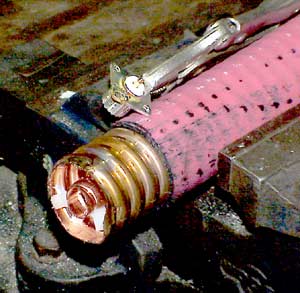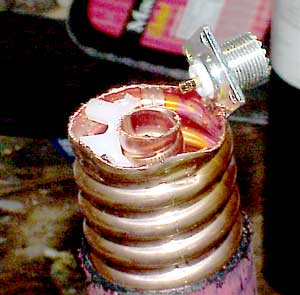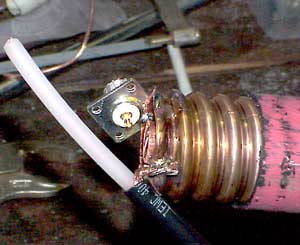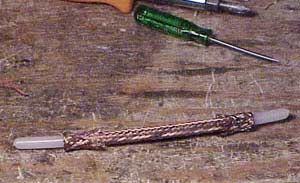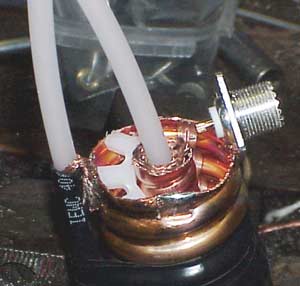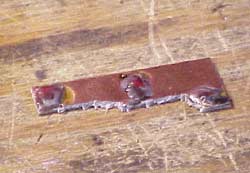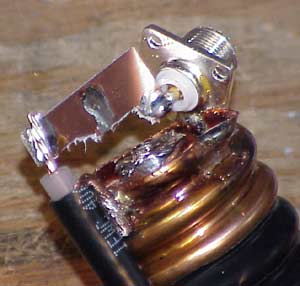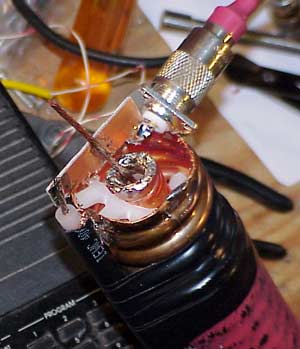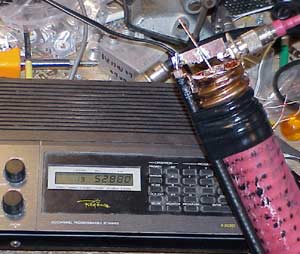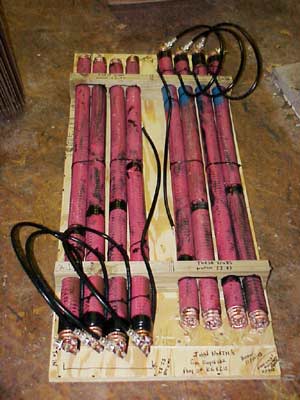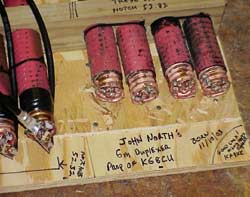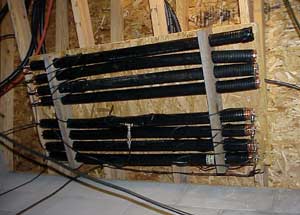
While it's nothing pretty to look at, it does it's job. I can spend the money that would have gone into a duplexer on other, more necessary, things.
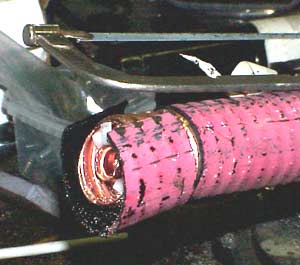
Once you cut your stubs to length (keep those for TX seperate from RX) you need to strip off a few inches of insulation from both ends. While a sawsall with a metal blade is the quickest way to cut the heliax to length, stripping the insulation is best done carefully by hand with a hacksaw and a drywall knife.
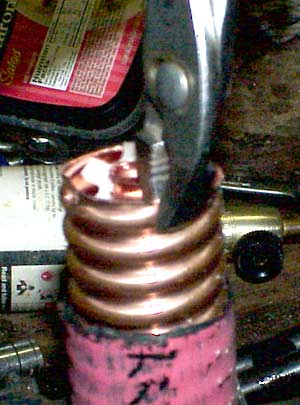
There are numerous ways to do this, I chose to take some #14 copper wire stripped out from some excess romex (household electrical wire) that was left over from a recent home addition.
If I was using the foam core heliax I would use my drywall knife and then a screwdriver to cut (and pry) out some of the foam so that I could run my shorting wires. The air direlectric heliax saves me that step (and it's a nice step to save-- cutting that foam isn't as easy as it sounds).
Once the area is clear of foam I then use a pair of pliers to flatten the outer conductor so that when I drill the holes for my wire the drill bit doesn't want to dance all over the place.
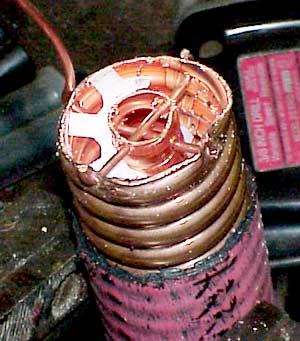
As I said, there are many ways you can 'electrically' achieve the same result.
It helps if you clean off the copper with emory cloth or some scotchbright. Soldering to this takes a LARGE (300w) sized soldering gun or a torch.
While most of the stubs were soldered using the typical rosin core solder that is normally used in electronics work, I have also been successful in using paste flux and 'plumbers solder'. Being that the pieces being soldered are more remniscent of plumbing, the job seemed to go quicker when using the techniques one would use to sweating pipes. The end result was about the same. Prepare to use plenty of solder!
